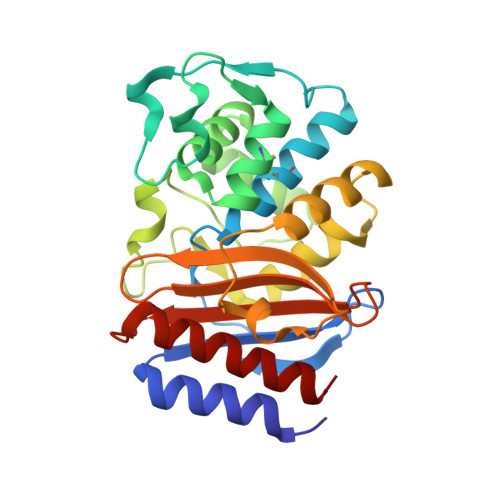Protein Electric Fields Enable Faster and Longer-Lasting Covalent Inhibition of beta-Lactamases.
Ji, Z., Kozuch, J., Mathews, I.I., Diercks, C.S., Shamsudin, Y., Schulz, M.A., Boxer, S.G.(2022) J Am Chem Soc 144: 20947-20954
- PubMed: 36324090
- DOI: https://doi.org/10.1021/jacs.2c09876
- Primary Citation of Related Structures:
7U6Q, 8DDZ, 8DE0, 8DE1, 8DE2 - PubMed Abstract:
The widespread design of covalent drugs has focused on crafting reactive groups of proper electrophilicity and positioning toward targeted amino-acid nucleophiles. We found that environmental electric fields projected onto a reactive chemical bond, an overlooked design element, play essential roles in the covalent inhibition of TEM-1 β-lactamase by avibactam. Using the vibrational Stark effect, the magnitudes of the electric fields that are exerted by TEM active sites onto avibactam's reactive C═O were measured and demonstrate an electrostatic gating effect that promotes bond formation yet relatively suppresses the reverse dissociation. These results suggest new principles of covalent drug design and off-target site prediction. Unlike shape and electrostatic complementary which address binding constants, electrostatic catalysis drives reaction rates, essential for covalent inhibition, and deepens our understanding of chemical reactivity, selectivity, and stability in complex systems.
- Department of Chemistry, Stanford University, Stanford, California 94305, United States.
Organizational Affiliation:

















